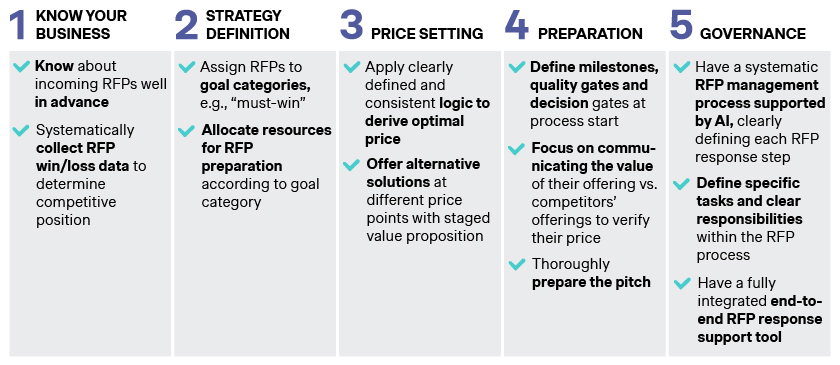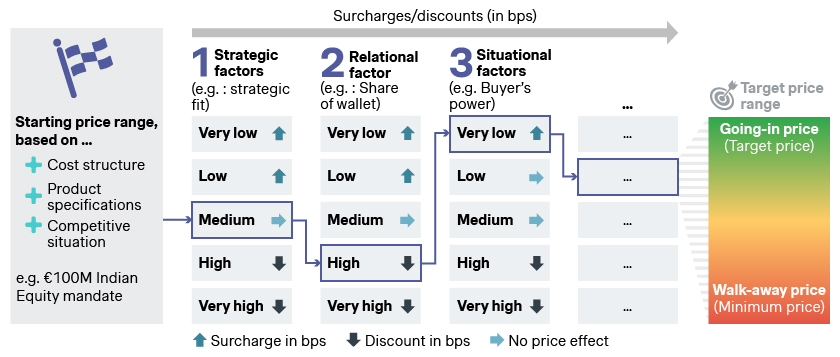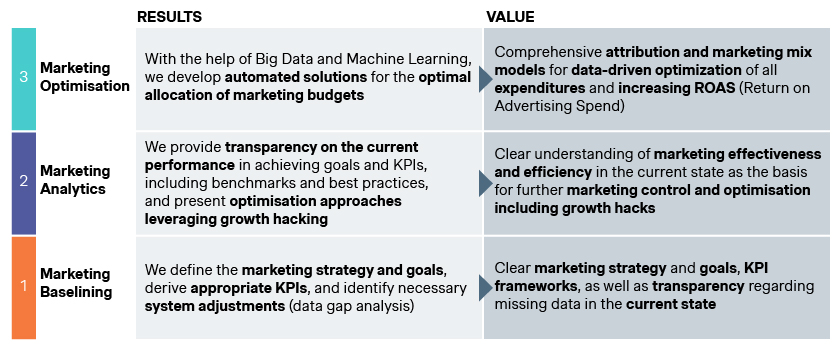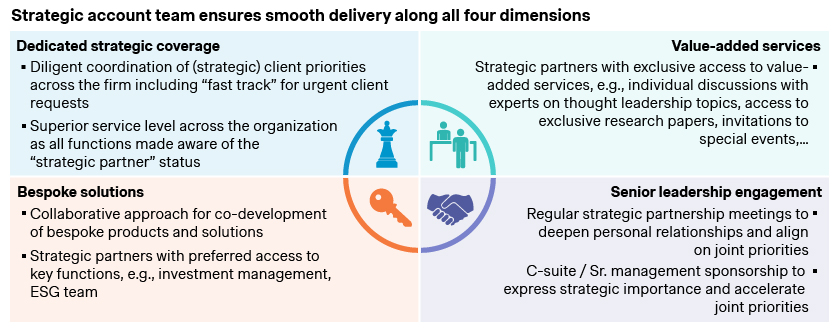Following years of growth, asset managers are facing challenges that are placing greater strain on their profitability. Our Simon-Kucher experts examine important developments in asset management, provide insights into the key trends and derive recommendations on how asset managers need to position themselves to be successful and profitable in the long run.
The conditions for the asset management industry have changed. The last decade was characterized by continuously rising global capital markets (CAGR 2010-2021: ~8 percent), aided by an ultra-loose monetary policy. The majority of asset managers were able to consistently increase their assets under management (AuM) and revenues during this time.
In many cases, challenging industry developments, such as the shift in product demand toward lower-margin ETFs, could be compensated for. However, in the wake of the COVID-19 pandemic, macroeconomic and geopolitical conditions dramatically deteriorated. As a result, the asset management industry is experiencing a decline in profitability.
Many asset managers initially responded to the multi-crisis with cost cutting. However, our experience shows that focusing on top-line growth is a more effective lever. A simple example illustrates the power of optimizing pricing to increase profits — a 5 percent increase in price, based on the given assumptions, leads to a 10 percent increase in profits. On the other hand, optimizing volume, variable costs, or fixed costs by 5 percent results in a much less significate outcome (see Fig. 1).

Below, we carefully examine key asset management trends and derive recommendations on how asset managers must position themselves to be successful and profitable in the long run.
1. Enhance your Request-for-Proposal process end-to-end
The level of sophistication in RFPs for institutional asset management has been steadily increasing in recent years. This is driven by investors’ needs for more complex investment solutions, greater involvement of investment consultants, and an increase in the number of RFPs.
As a result, many asset managers have strengthened their RFP teams and selectively optimized RFP processes. Industry leaders view RFP processes as a source of competitive advantage. They have already implemented customer-oriented RFP processes with workflow tools along the entire process chain.
Our experience indicates that leading asset managers differentiate themselves from competition across five dimensions of the RFP process

Furthermore, the use of artificial intelligence helps automate recurring RFP themes and inquiries to a large extent. This enables the RFP team to prioritize areas of unique differentiation for the asset manager. AI also helps process more RFPs in higher quality, increasing the probability of success.
2. Optimize pricing in institutional asset management
Intense price negotiations are a common occurrence for asset managers in the RFP process. Typically, they deal with these negotiations in a rather unstructured and undifferentiated way. However, our findings indicate that leading asset managers can enhance their margins by 4-8 percent by optimizing pricing on new mandates.
Successful asset managers follow a well-defined pricing strategy, implemented through transparent governance, such as the use of clear approval processes for discounts. Additionally, their pricing logic considers various factors, including costs, product-related aspects, strategic considerations, and relational and situational elements to determine the price (see Fig. 3). This approach allows them to effectively tap into customers' willingness to pay.

3. Define a distribution strategy 2.0 for investment products
Two recent developments have the potential to fundamentally change the distribution of investment products. Firstly, there are ongoing considerations at the European regulatory level to comprehensively ban inducements.
The prevailing asset management distribution model has relied on the incentivization of distribution partners, e.g., banks, through inducements. Prohibiting these would eliminate a crucial incentive for distribution partners to sell an asset manager’s investment products.
Secondly, a new generation of younger investors, whose needs and investment approach differ from previous generations has emerged (see Simon-Kucher's Retail Investments Study 2024). This group shows a significantly greater interest in making self-directed investment decisions. Often, young investors use services of neo-brokers, which serve as a cost-effective alternative to traditional banks or online brokers. Leading neo-brokers provide high-quality investment guidance through their apps, which is sufficient for many customers to make their investment decisions.
Therefore, it is crucial for asset managers to address the scenario of a comprehensive inducement ban and find ways to remain relevant to distribution partners. They must also grasp the implications of the rise in more self-directed investors and derive suitable measures, such as the increased utilization of marketing channels that directly target end customers.
From our perspective, there are several complementary solutions to consider.
I. Review product offering
- Is our product offering and product strategy suitable for an inducement-free world (e.g., product mix, fund vehicles, share classes, pricing)?
- How is our current product offering positioned in comparison to the competition in terms of value for money?
II. Optimize marketing effectiveness and efficiency
- The usage of which marketing channels do we need to intensify, and how should we do that in order to reach more end clients directly?
- Which strategic and operational KPIs do we need to define in order to allocate marketing budgets more effectively and efficiently, and to be able to measure true success?
III. Development of innovative solutions
- Which (technical) solutions can we offer our distribution partners to make our commercial model less dependent on investment products only (e.g., model portfolios)?
- Which other services (e.g., providing investment content directly to end customers via sales partner infrastructure) can we offer our distribution partners?
IV. Establish strategic partnerships
- How do we bind selected strategic partners more closely to us (e.g., implementation of a strategic account management program)?
- How can we best support our strategic partners (e.g., co-marketing)?
4. Optimize your product offering and development process
Many investment products lack true differentiation, e.g., ETFs that track a standard index. Therefore, it is crucial for asset managers to actively manage the competitiveness of their product offerings. Performance, fees, fund size, and ESG are relevant factors in determining competitiveness.
Optimizing the product offering requires a multidimensional approach. Investment products that cannot be optimized for competitiveness must be discontinued. These products tie up resources along the value chain which could better support the growth of more competitive products.
Furthermore, investors’ needs are constantly changing. Retail/private clients, for instance, are showing a greater interest in alternative asset classes such as private equity. Accordingly, asset managers must continually review and adapt their product offerings. To offer suitable products and reduce time-to-market, a structured and close collaboration between distribution and product development units is necessary. Many asset managers fail to properly configure this vital interface, resulting in product launches that either lack market demand or face significant delays. Those who have defined this interface clearly and implemented efficient decision-making structures for the launch (and discontinuation) of products have a clear competitive advantage. They can respond quickly and in a targeted manner to changes in customer demand.
5. Enhance marketing effectiveness and efficiency
Our research shows that many asset managers struggle to measure the effectiveness and efficiency of their marketing campaigns. Another challenge lies in limited marketing budgets, as these are not strategically allocated to marketing channels where they can have the highest impact. This arises from a lack of a clearly articulated marketing strategy, lack of insightful key performance indicators (KPIs), or assumption-based marketing planning.
To address this issue, we suggest a three-step value-driven approach (see Fig. 4). In the first step, we establish the prerequisites for effective and efficient marketing (including the definition of marketing strategy and KPIs). In the second phase, we apply analytical methods to assess the current marketing performance, identify areas for improvement, and derive actionable recommendations. Finally, we aim to reach a data-driven automated solution (leveraging Big Data and Machine Learning) for the optimal allocation of marketing budgets.

6. Establish strategic partnerships with the aid of a strategic account coverage team
In recent years, we've seen a growing tendency among institutional clients and distributors, such as banks, to streamline operations by reducing the number of external partners. Instead, they are introducing strategic partnership programs which contain only a few carefully curated strategic partners.
These strategic partners are confronted with elevated demands since they are expected to act as sparring partners, thought leaders or advisors rather than as pure product producers. Some asset managers have therefore introduced dedicated strategic account coverage (SAC) teams responsible for managing strategic partners. These teams define the strategic agenda and lead collaboration and dialogue with the key decision-makers of the partners. Typically, these teams are either positioned as an executive department within an asset management firm, or fully integrated into the distribution organization, working closely with other distribution units.

Our experience shows that successful SAC teams rely on:
- Clear responsibilities, especially versus distribution units
- Efficient processes, e.g., for C-level/Senior Management meetings
- Support tools, e.g., strategic account plans and briefing templates
- Representation in relevant government bodies, e.g., sales leadership meetings
- Targeted compensation schemes, e.g., incentivizing collaboration
Your path to success in asset management with Simon-Kucher
Factors like increasing regulation, geopolitical challenges, and a volatile economy are reshaping the asset management industry. The above six recommendations are key to your long-term success.
At Simon-Kucher, our growth specialists firmly believe in designing solutions that are customized to meet your individual business needs. This could involve adapting pricing strategies in light of regulatory changes, devising growth strategies for distributors, or enhancing customer retention through journey mapping.
Ready to transform the best possible strategy for your asset management success into tangible outcomes? Get in touch with us today.




